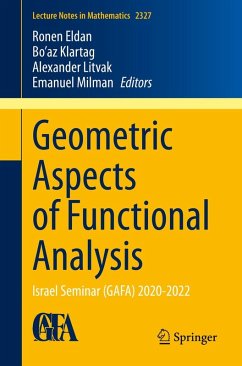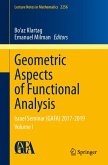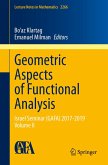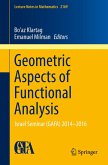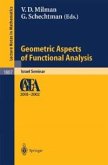This book reflects general trends in the study of geometric aspects of functional analysis, understood in a broad sense. A classical theme in the local theory of Banach spaces is the study of probability measures in high dimension and the concentration of measure phenomenon. Here this phenomenon is approached from different angles, including through analysis on the Hamming cube, and via quantitative estimates in the Central Limit Theorem under thin-shell and related assumptions. Classical convexity theory plays a central role in this volume, as well as the study of geometric inequalities. These inequalities, which are somewhat in spirit of the Brunn-Minkowski inequality, in turn shed light on convexity and on the geometry of Euclidean space. Probability measures with convexity or curvature properties, such as log-concave distributions, occupy an equally central role and arise in the study of Gaussian measures and non-trivial properties of the heat flow in Euclidean spaces. Also discussed are interactions of this circle of ideas with linear programming and sampling algorithms, including the solution of a question in online learning algorithms using a classical convexity construction from the 19th century.
Dieser Download kann aus rechtlichen Gründen nur mit Rechnungsadresse in A, B, BG, CY, CZ, D, DK, EW, E, FIN, F, GR, HR, H, IRL, I, LT, L, LR, M, NL, PL, P, R, S, SLO, SK ausgeliefert werden.

